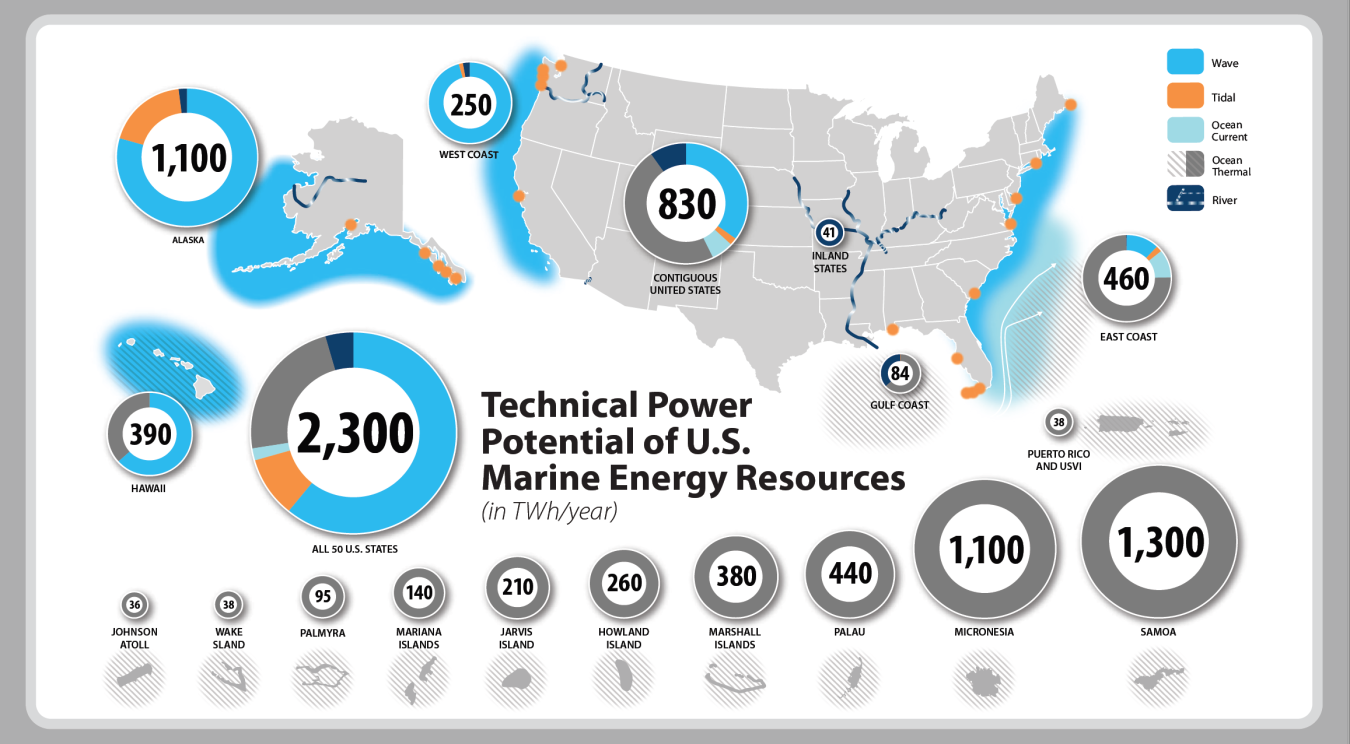Marine energy’s potential is as vast as the ocean itself.
Water Power Technologies Office
February 26, 2021The U.S. Department of Energy (DOE) recently funded, Marine Energy in the United States: An Overview of Opportunities, a summary report of the marine energy resource for wave, tidal currents, ocean currents, ocean thermal gradients, and river currents.
Summarizing the best available data on technically recoverable U.S. marine energy resources at the national, state, and regional levels, the study suggested that these plentiful, geographically diverse resources are well positioned to help satisfy the growing renewable energy demand and meaningfully contribute to the nation’s energy supply.

Technical power potential of U.S. marine energy resources (in TWh/yr) for the United States, U.S. territories, and freely associated states. Graphic courtesy of NREL
Focusing on the technical resource within the U.S. exclusive economic zone that can be harnessed for large-scale (megawatt- to gigawatt-scale) energy generation, the report found that even if only a small portion of the technical resource potential is captured, marine energy technologies would make significant contributions to meeting our nation’s energy needs.
Researchers calculated the total marine energy technical resource in the 50 states to be 2,300 TWh/yr, equivalent to roughly 57% of the 2019 U.S. electricity generation; add to that the additional 4,100 TWh/yr of ocean thermal resource from the U.S. Pacific and Caribbean territories and the scale and scope of marine energy’s potential comes into clear view.
For example, utilizing just one-tenth of the technically available marine energy resources in the 50 states would equate to 5.7% of our nation’s current electricity generation—enough energy to power 22-million homes (U.S. Energy Information Administration 2020).
Learn more about the WPTO Marine Energy Program and download the full report.

